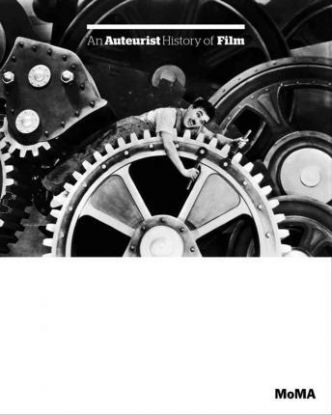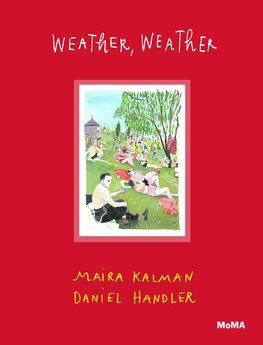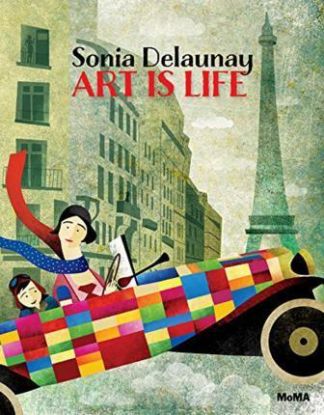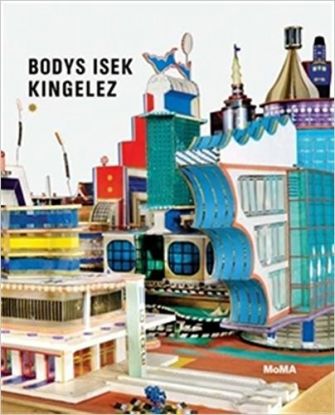Museum of Modern Art
vydavateľstvo
Cindy Sherman
Published to accompany the first major survey of Cindy Sherman's work in the United States in nearly 15 years, this publication presents a stunning range of work from the groundbreaking artist's 35-year career. Showcasing approximately 180 photographs from the mid-1970s to the present, including new works made for the exhibition and never before published, the volume is a vivid exploration of Sherman's sustained investigation into the construction of contemporary identity and the nature of representation. The book highlights major bodies of work including her seminal "Untitled Film Stills" (1977-80); centerfolds (1981); history portraits (1989-90); head shots (2000-2002); and two recent series on the experience and representation of aging in the context of contemporary obsessions with youth and status. An essay by curator Eva Respini provides an overview of Sherman's career, weaving together art historical analysis and discussions of the artist's working methods, and a contribution by art historian Johanna Burton offers a critical re-examination of Sherman's work in light of her recent series. A conversation between Cindy Sherman and filmmaker John Waters provides an enlightening view into the creative process. Cindy Sherman (born 1954) is widely recognized as one of the most important and influential artists in contemporary art. To create her photographs, she assumes multiple roles of photographer, model, makeup artist, hairdresser and stylist. With an arsenal of wigs, costumes, makeup, prosthetics and props, the artist has altered her physique and surroundings to create myriad tableaux, from screen siren to clown to aging socialite. Over the past 35 years, Sherman has sustained a provocative investigation into the nature of identity, drawn from movies, television, magazines, the Internet and art history. Sherman lives and works in New York City.
Vypredané
50,34 €
52,99 €
Moma Highlights
Few institutions approach the richness of The Museum of Modern Art's holdings in painting, sculpture, drawing, prints, illustrated books, architectural models and drawings, graphic and industrial design, photography, film, video and multimedia installations. This updated edition of "MoMA Highlights: 350 Works from The Museum of Modern Art" is a fresh consideration of the Museum's superlative collection of modern and contemporary art, featuring 115 new works since the 2004 edition, many of them recent acquisitions ranging from typefaces to conceptual performances that reflect the Museum's ongoing dedication to the art of our time. "MoMA Highlights" presents a rich chronological overview of the most significant artworks from each of the Museum's curatorial departments--painting and sculpture, drawings, prints and illustrated books, photography, architecture and design, film, and media and performance art--with each work represented by a vibrant, high-resolution color image and accompanied by a short informative text. Trimmer and lighter in weight than previous versions, this new edition of "MoMA Highlights" is an indispensable resource for exploring one of the premier art collections in the world.
Vypredané
14,73 €
15,50 €
American Modern
"American Modern" presents a fresh look at The Museum of Modern Art's holdings of American art made between 1915 and 1950, and considers the cultural preoccupations of a rapidly changing American society in the first half of the twentieth century. Organized thematically and featuring paintings, drawings, prints, photographs and sculpture, the publication brings together some of the Museum's most celebrated masterworks, contextualizing them across mediums and amidst lesser-seen but revelatory works. The selection of works by artists such as Edward Hopper, Georgia O'Keeffe, Charles Sheeler, Charles Burchfield and Stuart Davis includes urban and rural landscapes, scenes of industry, still-life compositions and portraiture. Although varying in style and specifics, they share certain underlying visual and emotional tendencies. Cityscapes and factories are shown eerily emptied of the crush of residents that flocked to them, becoming both a celebration of clean modern forms and technological advances, as in Sheeler's paintings and photographs, and a reflection of anxiety about increasingly urban lifestyles and their consequences for the American individual, as in Hopper's iconic "Night Windows." Equally silent rural scenes are no less haunting, but perhaps reflect a nostalgia for seemingly simpler times, and a celebration of early American traditions and values. Featured still lifes are as diverse: Stuart Davis' bright, angular compositions marry fractured form with logos and patterns taken from modern advertising, while Charles Demuth's rich watercolors of fruits and vegetables celebrate agricultural bounty and his mastery of the medium. Works by Arthur Dove, Alfred Stieglitz and Andrew Wyeth, among others, suggest different possibilities in portraiture, and the diverse ways artists have thought about the figure and its absence as a way to capture their subject. This volume is a focused look at the strengths and surprises of MoMA's collection in an area that has played a rich and major role in the institution's history.
Vypredané
36,09 €
37,99 €
Magritte
Published in conjunction with a major exhibition organized by The Museum of Modern Art, New York, in collaboration with The Menil Collection, Houston, and The Art Institute of Chicago, "Magritte: The Mystery of the Ordinary, 1926-1938" focuses on the breakthrough Surrealist years of Rene Magritte, creator of some of the twentieth century's most extraordinary images. Bringing together nearly 80 paintings, collages and objects with a selection of photographs, periodicals and early commercial work, it offers fresh insight into Magritte's identity as a modern artist and one of Surrealism's greatest painters. Beginning in 1926, when Magritte first aimed to create paintings that would, in his words, "challenge the real world," and concluding in 1938--a historically and biographically significant moment just before the outbreak of World War II--the publication traces central strategies and themes from this seminal period, particularly those of displacement, isolation, transformation, metamorphosis, the "misnaming" of objects and the representation of visions seen in half-waking states. The publication also includes an illustrated chronology outlining significant moments in the artist's life during this period, including travel, connections with other Surrealist artists and writers, contributions to journals and important exhibitions and reviews.
Vypredané
54,14 €
56,99 €
Young Charlotte: Filmmaker
Young Charlotte is a filmmaker who loves everything that s black and white, including spiders, penguins, and the old movies that she sees with her dad at the Golden Theatre (where the floors are sticky). With her camera at the ready wherever she goes, she finds inspiration for movies everywhere she looks. But when her colorful parents and colorful classmates just don t get her, she s ready to give up until a lucky encounter with a film curator at The Museum of Modern Art in New York changes her perspective. Inspired by the films she sees at MoMA and stories of other pioneering directors, Charlotte gets to work. And it s hard work! But when her movie finally premieres at the Museum, Charlotte is thrilled to be doing exactly what she loves best. A follow-up to Frank Viva s "Young Frank, Architect" and perfect for film lovers, aspiring directors, and artists of all stripes, "Young Charlotte, Filmmaker" is an inspiring tale."
Vypredané
18,53 €
19,50 €
Photography at MoMA - 1960 to Now - Volume II
The Museum of Modern Art has one of the greatest collections of 20th-century photography in the world. As one of three volumes dedicated to a new history of photography published by the Museum, this publication comprises a comprehensive catalogue of the collection post-1960s and brings much-needed new critical perspective to the most prominent artists working with the photographic medium of the late 20th and early 21st centuries. At a moment when photography is undergoing fast-paced changes and artists are seeking to redefine its boundaries in new and exciting ways, "Photography at MoMA" serves as an excellent resource for understanding the expanded field of contemporary photography today. The book begins with an in-depth introduction followed by eight chapters of full-color plates, each introduced by a short essay. Over 250 artists are featured, including Diane Arbus, John Baldessari, Jan Dibbets, Rineke Dijkstra, William Eggleston, Lee Friedlander, Louise Lawler, Zoe Leonard, Helen Levitt, Sigmar Polke, Cindy Sherman, Wolfgang Tillmans, Jeff Wall, Carrie Mae Weems, Hannah Wilke and Garry Winogrand, among many others.
Vypredané
70,30 €
74,00 €
Picasso Sculpture
Published in conjunction with the first large-scale retrospective of Picasso's sculpture in the US since The Museum of Modern Art's historic show of 1967, "Picasso Sculpture" is a sweeping survey of the artist's profoundly innovative and influential work in three dimensions.Over the course of his long career, Picasso devoted himself to sculpture wholeheartedly, if episodically, using both traditional and unconventional materials and techniques. Unlike painting, in which he was formally trained and through which he made his living, sculpture occupied a uniquely personal and experimental status in Picasso's oeuvre. He kept the majority of his sculptures in his private possession during his lifetime, and it was only in the late 1960s that the public became fully aware of this side of his oeuvre. "Picasso Sculpture" presents approximately 150 sculptures--many of them captured in newly commissioned and sometimes multi-view photographs--alongside a selection of works on paper and photographs. Organized into chapters that correspond to distinct periods during which Picasso devoted himself to sculpture, the publication features an introduction by the exhibition curators as well as a richly illustrated documentary chronology focusing on the sculptures included in the exhibition. A comprehensive bibliography and list of historic exhibitions related to Picasso's work in sculpture closes the volume, advancing the understanding of Picasso's practice and lifelong commitment to constant reinvention.
Vypredané
77,90 €
82,00 €
Family of Man: 60th Anniversary Edition
Hailed as the most successful exhibition of photography ever assembled, "The Family of Man" opened at The Museum of Modern Art in January 1955. It was groundbreaking in its scope--503 images by 273 photographers originating in 69 countries--as well as in the numbers of people who experienced it on its tour through 88 venues in 37 countries. As the permanent embodiment of Edward Steichen's monumental exhibition, this publication reproduces all of the 503 images that Steichen described as "a mirror of the essential oneness of mankind throughout the world. Photographs made in all parts of the world, of the gamut of life from birth to death." To celebrate the 60th anniversary of this classic and inspiring work, MoMA is releasing this handsome hardcover edition.
Vypredané
32,78 €
34,50 €
A Japanese Constellation
Published in conjunction with an exhibition at The Museum of Modern Art, "A Japanese Constellation" focuses on the work of a small group of architects and designers influenced by and gravitating around the architect Toyo Ito and the architectural firm SANAA. Beginning with an overview of Ito's career and his influence as a mentor to a new generation of Japanese architects, the catalogue presents a richly illustrated portfolio of recent works by three generations of internationally acclaimed designers, including Sou Fujimoto, Akihisa Hirata and Junya Ishigami. "A Japanese Constellation" reveals a network of influence and cross-pollination that has become particularly relevant at the start of the 21st century. Essays by curators, architectural historians and critics reflect on the transmission of an architectural sensibility, and suggest an alternative model to what has been commonly described as an individuality-based "star-system" in architecture. Offering a panorama of interlinked, settled or up-and-coming stars, the publication reveals how shared architectural themes travel across generations of architects, creating a strong identity for a regional practice with global impact.
Vypredané
50,35 €
53,00 €
Edgar Degas
A towering figure in 19th-century art, Degas is best known as a painter and chronicler of the ballet. Yet his work in monotype reveals the true extent of his restless experimentation. In the mid-1870s, Degas was introduced to the monotype process, a technique in which the artist draws in ink on a metal plate that is then run through a press, typically resulting in a single print. Degas embraced the medium with enormous enthusiasm, inventing a new repertoire of mark-making that included wiping, scraping, scratching, fingerprinting and rendering via removal. The resulting works are characterized by enigmatic and mutable forms, luminous passages emerging from darkness and a heightened tactility. Taking the monotype process to radical ends, Degas explored a variety of subjects, including city dwellers in motion; harshly illuminated cafe singers, ballet dancers on and offstage, women in intimate settings; and evanescent landscapes. With this medium, Degas is at his most modern, liberating drawing from tradition, depicting the body in new and daring ways, and boldly engaging the possibilities of abstraction. Published to accompany an exhibition at The Museum of Modern Art, this richly illustrated catalogue presents approximately 120 monotypes along with some 60 related works, including paintings, drawings, pastels, sketchbooks and prints. Essays and detailed studies by curators, scholars and conservators explore the creative potency of Degas' rarely seen monotypes, and highlight their impact on his wider practice. Hilaire-Germain-Edgar Degas (1834-1917) was a French painter, draftsman, printmaker and sculptor celebrated for his scenes of modern life, from the cabaret concert to the racetrack to the ballet, the subject for which he is best known. Academically trained, Degas emulated old master and 19th-century predecessors; at the same time, he embraced radically new subjects, compositions and techniques.
Vypredané
41,75 €
43,95 €
An Auteurist History of Film
Beginning in 2009, The Museum of Modern Art offered a weekly series of film screenings titled An Auteurist History of Film. Inspired by Andrew Sarris' seminal work "The American Cinema," which developed on the idea of "auteur theory" first discussed by the critics of "Cahiers du Cinéma" in the 1950s, the series presented cinematic works from MoMA's expansive collection with particular focus on the role of the director as artistic author. Featured works included those by D.W. Griffith, Fritz Lang, Walt Disney, Alfred Hitchcock, Akira Kurosawa, Federico Fellini, Satyajit Ray, Jean-Luc Godard, Eric Rohmer, Robert Altman, Werner Herzog, Stanley Kubrick, Martin Scorsese and many more. For the five years that the series was presented, film curator Charles Silver wrote a concise post to accompany each screening. These texts described the place of each film in the oeuvre of its director as well as its significance to wider film history. Following the end of the series' long run, the Museum has collected these posts for publication, bringing together Silver's insightful and often humorous readings of the series' films into a single volume. This volume is an invaluable guide to key directors and works of cinema as well as an excellent introduction to auteur theory. Charles Silver joined the Department of Film at The Museum of Modern Art in 1970, and has helmed the Film Study Center for the past four decades. Among his numerous exhibitions are retrospectives for Elia Kazan, Roman Polanski, John Ford, Charlie Chaplin, Joan Blondell, The Hubleys, Agnieszka Holland, Anna Mae Wong, John Wayne and Sessue Hayakawa. Thanks to his dedication to access and belief in film as the most influential art form of the 20th century, rare are the thesis papers or books written on cinema in the past 40 years that do not thank him for his expert guidance.
Vypredané
28,98 €
30,50 €
What the Weather Was Like
Can a photograph capture the sensation of a warm spring breeze or the smell of freshly fallen snow? Weather, Weather, the third volume in a series of creative collaborations between renowned artist and bestselling author Maira Kalman, New York Times bestselling author Daniel Handler (aka Lemony Snicket), and The Museum of Modern Art, New York, is an evocative exploration of the physical environments captured in photographs from around the world. From the rainy streets of Paris to a sun-dappled pool in Beverly Hills, from steamy summer sidewalks in Brooklyn to snow-covered fields in Japan, the photographs depict much more than what first meets the eye. Featuring vibrant new paintings by Kalman inspired by these photographs and poetic prose by Handler that bring the images to life, What the Weather Was Like is a tender reflection on the passing of seasons, perspective and memory.
Vypredané
14,20 €
14,95 €
A Life of Color
Sonia Delaunay (1885-1979), painter and textile, theater, and fashion designer, made enormous contributions to the development of abstraction in the early 1910s. In this new book, Delaunay and her six-year-old son Charles have a fantastical adventure in their car, modeled after her 1925 design for a Citroen convertible. They glide into a landscape of colors and shapes, as if they've driven into one of her paintings. Delaunay helps Charles understand her artistic process by asking him what shapes and colors he recognizes along the way, and Charles realizes that his mother's thoughts about art permeate every aspect of their life.
Vypredané
18,53 €
19,50 €
Bodys Isek Kingelez
Made from quotidian materials, Kingelez's sculptures evoke visionary architectures
The sculptures of Bodys Isek Kingelez (1948-2015) are imagined architectural propositions and improbable structures for a fairytale urban landscape. Comprised of paper, commercial packaging and the stuff of everyday life, his "extreme maquettes" transform these materials into fantastic visions that encompass civic buildings, public monuments and private pavilions. Born in the Belgian Congo, Kingelez gained international renown following his participation in the landmark 1989 exhibition Magiciens de la Terre at Centre Georges Pompidou and the Grande Halle of the Parc de la Villette, and since that time, his work has been included in numerous global surveys and in several solo presentations. Published to accompany the first retrospective of his work, this volume traces the span of Kingelez's three decade career, from never-before-exhibited early works to sculptures that launched his career in 1989 and the complex and multifaceted cities of later decades, bringing his rarely seen, distinctive oeuvre to international audiences. Featuring stunning new photography of his work, this serves as the most comprehensive volume on the artist to date.
Vypredané
33,73 €
35,50 €
Toward a Concrete Utopia
In Yugoslavia's "Third Way" architecture, Brutalism meets the fantastical
Squeezed between the two rival Cold War blocs, Yugoslav architecture consistently adhered to a modernist trajectory. As a founding nation of the Non-Aligned Movement, Yugoslavia became a major exporter of modernist architecture to Africa and the Middle East in a postcolonial world. By merging a variety of local traditions and contemporary international influences in the context of a unique Yugoslav brand of socialism, often described as the "Third Way," local architects produced a veritable "parallel universe" of modern architecture during the 45 years of the country's existence. This remarkable body of work has sparked recurrent international interest, yet a rigorous interpretative study never materialized in the United States until now.
Published in conjunction with a major exhibition on the architectural production of Yugoslavia between 1948 and 1980, this is the first publication to showcase an understudied but important body of modernist architecture. Featuring new scholarship and previously unpublished archival materials, this richly illustrated publication sheds light on key ideological concepts of Yugoslav architecture, urbanism and society by delving into the exceptional projects and key figures of the era, among them Bogdan Bogdanovic, Zoran Bojovic, Drago Galic, Janko Konstantinov, Georgi Konstantinovski, Niko Kralj, Boris Magas, Juraj Neidhardt, Joze Plecnik, Svetlana Kana Radevic, Edvard Ravnikar, Vjenceslav Richter, Milica Steric, Ivan Straus and Zlatko Ugljen.
Vypredané
56,95 €
59,95 €
Art Making with MoMA
Art Making with MoMA , from educators at The Museum of Modern Art, New York, presents twenty interactive activities that invite kids (and adults!) to discover the materials and techniques of modern and contemporary artists. Drawing on over eighteen years of research and experience engaging families through programmes, installations and resources at the Museum, this colourful activity book is filled with clear instructions, thought-provoking prompts and reproductions of works in MoMA’s collection. Art Making with MoMA encourages personal expression and creative exploration by incorporating materials similar to, and inspired by, those used by artists.
Each project is inspired by a particular artist, movement or design concept, including Cindy Sherman, Romare Bearden, Alexander Calder, Frida Kahlo, Diego Rivera, and Charles and Ray Eames. In addition to illustrated step-by-step instructions, tips and open-ended questions encourage kids to tap into their own ideas and experiences as they explore new and established techniques for making art. With a range of activities that can be done alone or in a group, many of them with materials scavenged from around the house, this book will inspire hours of tinkering, designing, constructing, creating and discussion.
Vypredané
22,75 €
23,95 €















